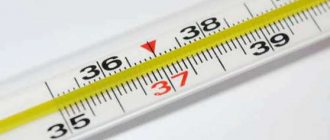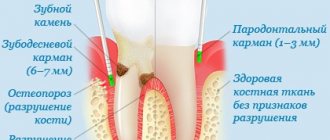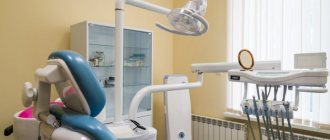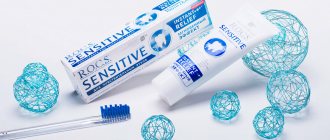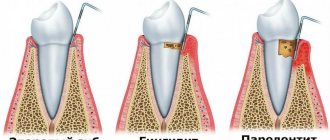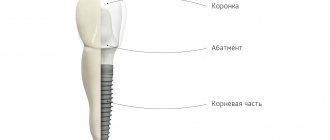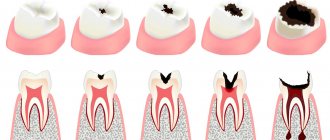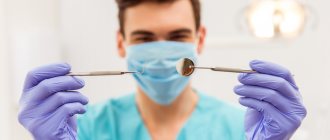We treat gums - save teeth
Due to the widespread distribution, labor intensity and low effectiveness of treatment of advanced stages, periodontal diseases are one of the most difficult problems in dentistry. Thus, according to WHO, about 95% of the adult population of the planet and 80% of children have some signs of periodontal tissue disease, and this statistics cannot but be alarming. Periodontitis not only causes tooth decay and bad breath, but also leads to tooth loss.
In recent years, tooth extraction due to gum inflammation and periodontal pathology is almost five times higher than tooth loss from caries and its complications, leading dentists to the need to find new approaches to the treatment and prevention of these diseases.
Prevention of gum disease
Preventing a disease is easier than treating it, especially after the disease becomes chronic, so preventive measures are important to maintain the health of the gums and the entire oral cavity. Among them:
- Daily hygiene, including actually brushing your teeth, using a special thread (floss) for interdental spaces, rinsing your mouth with refreshing solutions, and using tongue scrapers. Brushes, pastes and rinses are selected individually; may have a purely hygienic or therapeutic and prophylactic purpose (to reduce the sensitivity of the enamel, bleeding).
- Periodic visits to the dentist - preferably every 6 months, if there are no complaints and the gums are healthy. In addition to a general examination and care recommendations, it is advisable to undergo a professional cleaning procedure by a dental hygienist. To eliminate dental plaque, a combination of manual (mechanical removal with curettes) and hardware techniques is used, the most popular of which are:
- air-flow treatment – suitable for removing soft or small amounts of hard plaque. The enamel is exposed to a directed jet of a finely dispersed mixture of air, soda, and water under strong pressure. Used in children from 2.5 years old;
What does air flow look like? - ultrasonic cleaning – used to destroy hardened deposits, including those accumulated in gum pockets. It is produced by a device with a hook-shaped nozzle, through which ultrasonic vibrations are applied to the treated area, causing the destruction of plaque. Used in adults and children over 14 years of age.
Tips to help keep your teeth and gums healthy
In addition to hygiene measures, maintaining health in this area is facilitated by:
- Balanced diet. It should include products that are useful for maintaining dental health - dairy (cheese, cottage cheese, kefir), low-fat fish, fiber-rich vegetables and fruits that have not been heat-treated. You need to drink less strong tea and coffee, and give up sweet carbonated drinks. To compensate for the deficiency of nutrients, it is allowed to take correctly selected tablet forms of vitamins (A, C, E, D), microelements (calcium, phosphorus, fluorine).
- Refusal of bad habits - drinking alcohol, smoking, biting nails, and other hard objects (pens, seeds).
- General strengthening of the immune system by hardening, regular walks in the fresh air, doing gymnastics, maintaining a sleep schedule, and avoiding nervous overload.
Healthy gums and teeth are the key to a beautiful smile in photographs, as well as the absence of discomfort in life. Therefore, you need to carefully take care of them yourself, with the help of doctors if necessary.
About the problem of gum inflammation
Of all gum diseases, 90–95% are inflammatory, such as gingivitis and periodontitis. When healthy, the gum covers the bone and connects to the surface of the tooth at the neck. There is a small groove between the gum and the tooth, only one or two millimeters deep. The gingival sulcus is a natural protective barrier against infection.
Inflammation of the gums begins with gingivitis, which affects only the superficial tissues of the gums. In turn, periodontitis is an inflammatory disease that affects the entire complex of supporting tissues of the tooth: gums, ligaments and bone. In fact, gingivitis and periodontitis are two interrelated forms of the disease.
The inflammatory process first occurs in the gum tissue and gradually involves the closest periodontal structures - the dentogingival ligament and the dentofacial bone. The initial signs of the disease are bleeding gums, an unpleasant odor, and the presence of dental plaque. For many years, periodontitis can be painless, or even completely asymptomatic.
Often the patient consults a doctor with an already severe stage of the disease, when tooth mobility appears and the need to correct the bite arises. It is no secret that many people do not pay attention to bleeding gums when brushing their teeth, exposure of the necks of their teeth, and get used to bad breath. Those who believe that these are simply weak, inflamed gums, and that bad breath has a different origin, are deeply mistaken.
The lack of timely, qualified treatment leads to complete loss of teeth, since the inflammatory process in the gums is accompanied by resorption of the supporting bone. Today, periodontal tissue diseases are not only a medical, but also a social problem. This state of affairs is primarily due to their widespread prevalence, as well as the intensity of damage to all age groups of the population of our country.
For example, in adolescents, certain signs of periodontal disease (bleeding gums, tartar, etc.) are detected in 90% of cases, and in older age (30-40 years or more), pronounced inflammatory and destructive changes in the entire periodontal complex with the formation of pockets predominate , suppuration, loose teeth and tooth loss.
How to eat healthy
To improve the condition of the bone tissue of the teeth, you need to correctly formulate your diet, which should contain foods with a high calcium content. These are fermented milk products, cheeses, red fish, almonds and dark garden herbs (parsley, cilantro, dill).
Foods rich in vitamin C help maintain healthy gums, which strengthens the walls of blood vessels, which means it improves blood supply to the gums, delivering all the beneficial substances to them.
Causes of gum inflammation?
After each meal, a small amount of food debris remains on the teeth and between the teeth, which forms a soft plaque. It is difficult to see, but oral microorganisms immediately settle in it. If plaque is not regularly removed from the surface of the tooth, it turns into tartar as a result of the deposition of salivary salts - a substrate for bacterial colonies.
The accumulation of bacterial plaque and waste products of microorganisms in the area of the gingival sulcus leads to gingivitis, subsequently to the destruction of the sulcus, the formation of periodontal pockets, the development of periodontitis and damage to bone tissue. Inflammation of the gums develops faster when the general defenses of the body are weakened, with dental caries, after a tooth injury (for example, with a blow, microtrauma when biting a thread), after unsuccessful prosthetics.
Diseases such as hypertension, diabetes, diseases of the thyroid gland and adrenal glands lead to serious changes in the entire body, including the periodontium. Patients with this pathology should be under constant supervision of a periodontist and therapist. Regular visits to these specialists allow you to successfully treat gum inflammation and save teeth in the presence of general diseases of the body.
Plaque, which is the main cause of gum disease, contains a huge variety of bacteria that can spread to other organs. In this regard, periodontal pockets are centers of chronic infection. It has been proven that the long-term presence of infection in such a formation leads to the development of rheumatoid arthritis, infective endocarditis, gastritis and enterocolitis.
How to recognize gum problems yourself?
- Blood when brushing your teeth is the very first symptom that you have all heard about. No, don't ignore her. No, it's not you who use your toothbrush carelessly. No, you cannot visit the doctor another time. A healthy gum will not bleed. So if blood is found, then we are talking about inflammation. The gums above a tooth have swollen and become very sensitive. If this is not related to a mechanical injury (cut, bruise of the jaw), then you need to go to the doctor.
- The teeth have become visually longer. You may have even noticed this when you looked in the mirror, but you might have mistaken it for an optical illusion. In the understanding of an adult, molars cannot become longer. And you're right, they can't. This visual effect is created due to the receding gums. This is the first sign of periodontitis. And you need to undergo all the necessary examinations as quickly as possible to prevent loosening and loss of teeth.
- When you press on a tooth, lymph, blood or even pus appears from the gums - it all depends on the severity of the situation. Take this as a sign that the previously damaged gum has become infected. This could happen due to a wound due to surgery, for example, if you had dentures . Or the wound could appear due to improper care. In any case, the problem has gone very far and you need to go to the dentist.
How to prevent gum inflammation?
WHO recommendations propose a program for the prevention of gum inflammation, where special attention is paid to health education on oral hygiene, explanation of the importance of proper brushing of teeth, a nutritious diet and its structure, risk factors that disrupt the normal functioning of the periodontium, periodic examination of the oral cavity by a doctor and a healthy lifestyle .
To remove plaque, you need to visit a dentist every six months for professional teeth cleaning. You also need to thoroughly brush your teeth twice a day (after breakfast and before bed), and thoroughly clean the crowns of your teeth and the interdental spaces. Toothpastes are of great help in oral care.
To prevent gum inflammation, you should choose toothpastes with anti-inflammatory, antibacterial and plaque-removing effects. Preference should be given to those that contain substances that dissolve microbial plaque and prevent its further formation, for example enzymes. Additional assistance in the prevention of gum inflammation is provided by the use of rinses that neutralize microorganisms in hard-to-reach places in the oral cavity.
Currently, various rinses represent a promising link in the complex treatment of diseases of the oral mucosa and periodontal disease. The use of prophylactic rinses with combined herbal preparations has antimicrobial, anti-inflammatory and analgesic properties. Human acquaintance with the medicinal properties of plants dates back to ancient times, and in modern medicine medicinal plants not only have not lost their position, but are increasingly preferred today in the prevention and treatment of various diseases. Therefore, the medicinal plants used in the manufacture of professional mouth rinses are low-toxic and can be used for a long time without side effects.
Clinical researches
All ASEPTA products are clinically proven effective.
- Repeated clinical studies have proven that the two-component mouth rinse ASEPTA ACTIVE more effectively combats the causes of inflammation and bleeding compared to single-component rinses - it reduces inflammation by 41% and reduces bleeding gums by 43%.
- It has also been clinically proven that regular use of preventive toothpaste ASEPTA ACTIVE for a month can reduce bleeding gums by 60%, improve overall oral health by 44% and reduce inflammation by 33%.
- Laboratory studies have proven that using ASEPTA adhesive gum balm for a week can reduce gum bleeding by 51% and reduce inflammation by 50%.
Sources:
- The role of anti-inflammatory rinse in the treatment of periodontal diseases (L.Yu. Orekhova, A.A. Leontyev, S.B. Ulitovsky) L.Yu. OREKHOVA, Doctor of Medical Sciences, Prof., Head of Department; A.A. LEONTIEV, dentist; S.B. ULITOVSKY, Doctor of Medical Sciences, Prof. Department of Therapeutic Dentistry of St. Petersburg State Medical University named after. acad. I. P. Pavlova
- Clinical and laboratory assessment of the influence of domestic therapeutic and prophylactic toothpaste based on plant extracts on the condition of the oral cavity in patients with simple marginal gingivitis. Doctor of Medical Sciences, Professor Elovikova T.M.1, Candidate of Chemical Sciences, Associate Professor Ermishina E.Yu. 2, Doctor of Technical Sciences Associate Professor Belokonova N.A. 2 Department of Therapeutic Dentistry USMU1, Department of General Chemistry USMU2
- The use of adhesive balm "Asepta®" in the treatment of inflammatory periodontal diseases L.Yu. OREKHOVA*, Dr. med. Sciences, Professor, Head of Department V.V. CHPP**, Dr. med. Sciences, Professor, Head of Department S.B. ULITOVSKY*, Dr. med. Sciences, Professor A.A. LEONTIEV*, dentist A.A. DOMORAD**, O.M. YAKOVLEV** SPbSMU named after. acad. I.P. Pavlova, St. Petersburg - *Department of Therapeutic Dentistry, **Department of Microbiology
Oral hygiene in children
There is a tradition of giving a silver spoon for the first tooth that erupts. We would add a toothbrush to this tradition. We recommend that you teach your child how to brush their teeth in a playful way from the moment the first tooth appears.
Doctors note that up to the age of 10, it is necessary to help children brush their teeth, since at a younger age children find it boring and do not understand why they should do it at all. There are also special liquids or tablets that allow you to check the remaining plaque on your teeth using contrast staining.
There are modern toothbrushes that can be synchronized with a tablet, then brushing your teeth turns into a game.
It is important to remember that the sooner you start brushing your child’s teeth properly, the healthier his teeth will be!


